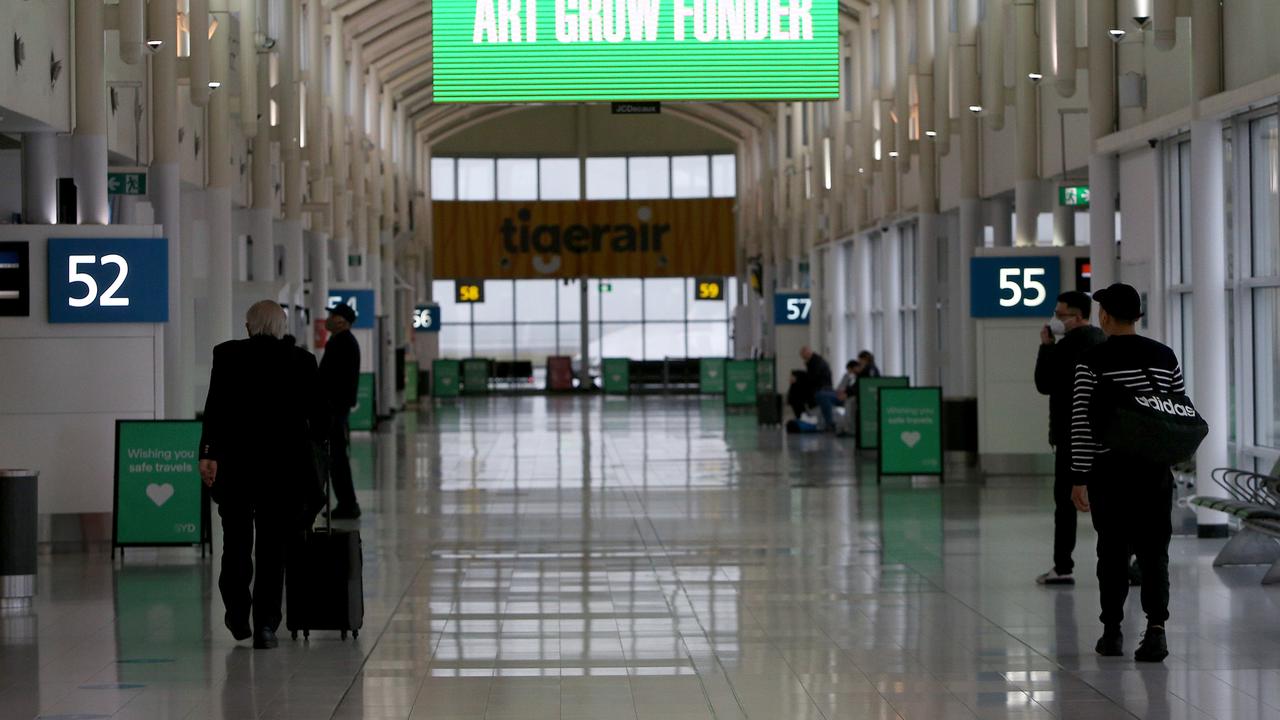Flying through the pack: How footy is helping Seven trounce Nine
IT was the biggest sports rights deal Australia had ever seen — a six-year, $2.5 billion bonanza for the indigenous game. But two years in, is AFL paying its way for Seven? We crunch the numbers.

Business
Don't miss out on the headlines from Business. Followed categories will be added to My News.
Two years into Australia’s richest sports broadcast deal, football is proving as critical as ever to Seven’s fortunes, writes Peter Taylor.
IT was a Thursday morning in early autumn and executives at Nine Network’s headquarters in Willoughby, on Sydney’s North Shore, had reason to smile.
The ratings report for the previous night was in — and it was unequivocal.
FRONT BAR VS FOOTY SHOW: WHO WON GRAND FINAL BATTLE?
THE FOOTY SHOW: WHY EDDIE AND SAM’S SHOW SHOULD GO ON
Nine, snaring bumper numbers for its faux-wedding cum dating show Married At First Sight, had shot the lights out.
At a time of year when Seven usually dominated, fuelled by the success of its evergreen adversarial cooking contest My Kitchen Rules, Nine had turned the tables.
So far that week, it had won all four nights in the free-to-air ratings battle.

By share of eyeballs, it was a full five percentage points clear of its arch rival — surely enough to ensure the network would claim what would be its second official ratings week for the year so far.
Then, along came the football.
That night, on March 22, Richmond met Carlton in a marquee match at the MCG, as has become customary for the AFL in its opening round.
Before a crowd of more than 90,000, the reigning premier comfortably dispatched its old foe, but only after three quarters of seesawing play where the lead changed nine times.
Setting aside the early-evening news services, it was the most watched program nationally on free-to-air TV that evening in the official OzTam ratings.
In Melbourne and Adelaide alone, it averaged more than 520,000 viewers — a modest number compared with the millions who tuned in nationally for Saturday’s Grand Final, but a robust tally for a typical weeknight by the modern standards of network television.

Across Australia, more than half that number again watched the opening-round match on Foxtel, making it the pay TV broadcaster’s most-watched program that night.
Footy was back. And with it, bumper audiences.
With three prime-time matches that weekend, Seven Network reeled in what appeared to be an unassailable lead for its nemesis. It leapfrogged Nine Network to claim the week.
The stunning comeback also provided a taste of what was to come later in the season: a demoralising trend for Nine.
From late June, it would happen over and over.
With My Kitchen Rules finished, Seven would often struggle early each week — all the more so when renovation series House Rules wrapped up.
Its new would-be flagships, talent quest Dance Boss and dating show Take Me Out, would fall flat despite heavy promotion.

Nine, come Wednesday nights, would frequently sit in pole position, well placed to claim the ratings week across the mainland capitals.
Then, with the gale-force wind of Australian football in its sails, Seven would romp home.
Notably, two of the three NRL State of Origin weeks — normally locks for Nine — fell Seven’s way, both of them during the five weeks mid-season when the broadcaster had extra prime-time AFL matches, on Thursdays.
When Nine, four weeks ago, finally claimed its third week of the official ratings season, it was by no coincidence the same week as the AFL’s pre-finals bye.
Seven at that point had snared victory in 24 out of 27 weeks. Its winning tally now stands at 28 from 31.

So two years into Australia’s richest sports broadcast agreement, is football paying its way for Seven?
The broadcaster, Foxtel (majority owned by Herald Sun publisher News Corp) and Telstra are paying $2.51 billion for AFL rights over the six years to 2022.
For its piece of the pie, Seven parent Seven West Media is paying $900 million — or $150 million a year, including $10 million of free advertising for the league.
That’s a pretty penny for a company that has made a loss in three of the past six years.
Yet the alternative for Seven is barely worth contemplating: the role AFL has played in keeping the network in pole position merely underlines the critical value of the rights.
Media analyst Steve Allen, from consultancy house Fusion Strategy, says Seven has let itself down with its early-week programming this quarter.
“It’s the weakness of the regular weekly line-up that is hurting them,” he says.
Cut one way, that might suggest that with the right programs, Seven could get by without football.

But finding the “right” programs is easier said than done: the audience is fickle, the rivalry between networks fierce, and the most heavily-promoted shows can still crash and burn in just a few screenings.
Sport, by contrast, is a perennial drawcard — and Australian football particularly so.
While Nine’s NRL broadcasts still prevail by a wide margin in Sydney and Brisbane, such is the depth of passion for the indigenous game elsewhere that Seven dominates nationally.
Of the 36 nights this year when Seven has broadcast AFL at the same time as Nine has broadcast NRL, Seven has won the national metropolitan ratings every time.
Mr Allen says that over the longer term, Seven has suffered some “leakage” of viewers to Foxtel, particularly since the pay-TV company — with exclusive rights to most matches — started simulcasting all of Seven’s matches other than the Grand Final.
But the experience of recent months shows that without AFL, Seven would be “in a bucket of trouble”, he says. “They wouldn’t be winning weeks.”

That said, everything has its limit.
When the AFL launches into its next round of broadcast negotiations two to three years from now, it will doubtless want a higher price, and Seven will want its slice of the rights.
But will it have the capacity to dig deeper still?
Mr Allen is sceptical. He says that Seven, like all free-to-air broadcasters, is struggling to lift revenue, so the unyielding laws of mathematics will get in the way.
Prices for sports rights, he believes, are “maxed out”. But he’s quick to add a caveat.
“We’ve been saying that for five years,” he says.
“And on every occasion, we have been wrong.”
HARD BALL GETS
How the footy stats stack up for fierce foes Seven and Nine.
28 — The number of ratings weeks won by Seven so far this year. Nine has won three: one before the AFL season, one State of Origin week and the week of the AFL’s pre-finals bye.
36 — The number of nights this year when Seven screened AFL and Nine screened NRL at the same time. Seven won all 36 nights.
45.4% — Seven Network’s share of the free-to-air TV audience the night of the First Preliminary Final. Nine’s share was 24 per cent.
2.6m — The average TV audience across the mainland capital cities for this year’s AFL Grand Final. The NRL Grand Final averaged 2.1 million.
$150m — The cost to Seven each year for its AFL rights, including $10 million “contra”, or free advertising for the league. NRL rights, including contra, cost Nine $125 million a year.
Source: OzTam ratings, covering Melbourne, Sydney, Brisbane, Adelaide and Perth.


